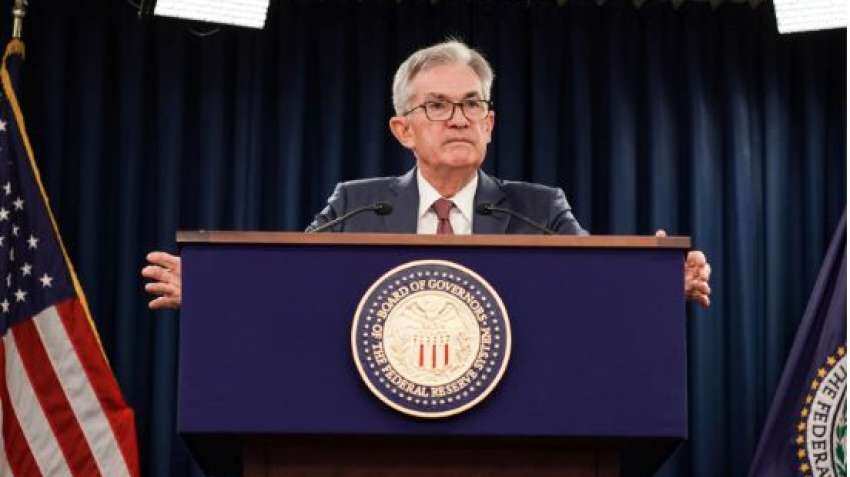Fed faces new trade-offs, hunts for new model, in low-rate world
US Federal Reserve grappling with how to fight the next recession, as experts debate new approaches to financial regulation as well as a fuller overhaul of Fed strategy.

An unprecedented combination of low US unemployment, weak inflation and low-interest rates has the US Federal Reserve grappling with how to fight the next recession, as experts debate new approaches to financial regulation as well as a fuller overhaul of Fed strategy.
At a three-day conference in San Diego on an array of economic topics, one stood out: The textbook view of central banking, where low unemployment produces unwanted inflation that monetary policymakers can counter with interest-rate hikes, is at least badly hobbled if not fully broken.
See Zee Business Live TV streaming below:
Not only are low unemployment and weak inflation co-existing but global interest rates are stuck at such low levels, and are considered so unlikely to rise, that the Fed and other central banks may enter the next recession with little room to cut rates before hitting zero and having to decide on other strategies.
“These factors are basically the hand that we are dealt," New York Fed President John Williams said, expressing a resignation shared by other central bankers and academic researchers gathered for the American Economic Association annual conference.
The Fed is in the middle of a broad review of its approach to monetary policy that is due to conclude later this year. The economy is currently felt to be functioning well, with a recession unlikely in the near term - an apt time, officials feel, to make any changes.
The conference produced a flourish of ideas, including a call from former Fed Chair Ben Bernanke to make once-unconventional monetary policy tools like bond-buying a permanent part of the central bank`s arsenal - in effect making the tactics he used to counter the 2007-09 financial crisis a staple part of Fed recession-fighting.
With a Federal Funds target rate unlikely to rise much beyond 2 to 3 percent, and currently set lower than that, the Fed would not have enough "firepower" otherwise to battle the next downturn, he said.
On Sunday, former Fed Chair Janet Yellen called for better tools for financial regulation, arguing the Fed could safely leave interest rates at low levels, boosting job and wage growth, if it was confident other methods could be used to ensure that an ongoing era of easy money did not lead to a credit crash - and ultimately to worse outcomes overall.
Although it would be politically touchy in the United States, other countries have put stricter limits on mortgage credit, for example, to prevent low interest rates from encouraging risky borrowing.
"Such tools are needed here to free monetary policy to focus on" the Fed`s core objectives of maximum employment and stable prices, Yellen said.
Cleveland Fed President Loretta Mester told Reuters on the sidelines of the meeting that if Fed policymakers are trying to resolve one question in their minds right now, it is how much financial risk they are willing to push into the future in return for the benefits workers are seeing today.
"Some people ... say: `I am willing to take the risk of a very low interest rate now,` and others say the problem with that is, if you do end up with a financial stability problem, the very people you are trying to help are going to be the ones that are hurt worse ... That is kind of the issue. It may be about a time-frame question.”
Concern that low borrowing costs could fuel such financial excesses were among arguments that some Fed policymakers made last year against the central bank`s three interest rate cuts.
In the end, Fed Chair Jerome Powell and most of his colleagues judged that financial markets were flashing few warning signs of rising instability and thought rate cuts could cushion the U.S. economy from the effects of slowing global growth and rising trade tariffs.
'NEED ANOTHER TOOL'
In research presented at the conference, a group of researchers said, as Yellen suggested, that the Fed may not need to compromise on its macroeconomic goals if there are better rules for regulating banks, household credit and otherwise ensuring against financial crisis.
“Can monetary policy address output and stable prices and something called financial conditions? You need another tool,” said Nellie Liang, a senior fellow at the Brookings Institution and former head of the Fed’s financial stability division.
Liang co-authored a paper with researchers at the International Monetary Fund and the Federal Reserve Bank of New York concluding that without separate tools to keep financial conditions stable, central bank policy sets the stage for lower long-term growth because of the occasional credit busts.
“We have low inflation. We`ve got lots of employment. If we keep rates low because inflation is not high ... what kind of financial vulnerabilities might you build and how much does that increase the downside tail risk four quarters out, eight quarters out?” Liang said. “These vulnerabilities build over time ... You get better stuff now at the cost of worse later.”
It is not clear how much traction those ideas may get in the near future. Regulators have moved to lighten some rules on the banks, and one of the ideas Liang’s group considered – a “countercyclical” bank capital requirement that could be raised when times are good and loosened to encourage lending in bad times – is in place but never used.
Other researchers delved into the need for better fiscal policies so the Fed will not fight the next crisis alone – even concluding that something like defense spending could be used to buffer a recession.
One paper concluded, for example, that a surge in government contract spending lowers local interest rates for things like used-car purchases and home mortgages, providing an unexpected economic boost beyond the direct contract dollars spent.
Get Latest Business News, Stock Market Updates and Videos; Check your tax outgo through Income Tax Calculator and save money through our Personal Finance coverage. Check Business Breaking News Live on Zee Business Twitter and Facebook. Subscribe on YouTube.
RECOMMENDED STORIES

Fundamental picks by brokerage: These 3 largecap, 2 midcap stocks can give up to 28% return - Check targets

SBI Senior Citizen Latest FD Rates: What senior citizens can get on Rs 7 lakh, Rs 14 lakh, and Rs 21 lakh investments in Amrit Vrishti, 1-, 3-, and 5-year fixed deposits

Tamil Nadu Weather Alert: Chennai may receive heavy rains; IMD issues yellow & orange alerts in these districts

SIP+SWP: Rs 10,000 monthly SIP for 20 years, Rs 25 lakh lump sum investment, then Rs 2.15 lakh monthly income for 25 years; see expert calculations

Top 7 Mutual Funds With Highest Returns in 10 Years: Rs 10 lakh investment in No 1 scheme has turned into Rs 79,46,160 in 10 years

SIP vs PPF: How much corpus you can build in 15 years by investing Rs 1.5 lakh per year? Understand through calculations

Retirement Planning: Investment Rs 20 lakh, retirement corpus goal Rs 3.40 crore; know how you can achieve it
08:50 AM IST










 Jerome Powell says Fed will likely cut rates cautiously given persistent inflation pressures
Jerome Powell says Fed will likely cut rates cautiously given persistent inflation pressures Fed's Jerome Hayden Powell highlights slowing job market in signal that rate cuts may be nearing
Fed's Jerome Hayden Powell highlights slowing job market in signal that rate cuts may be nearing US wholesale prices dropped in May, adding to evidence that inflation pressures are cooling
US wholesale prices dropped in May, adding to evidence that inflation pressures are cooling Federal Reserve is likely to scale back plans for rate cuts because of persistent inflation
Federal Reserve is likely to scale back plans for rate cuts because of persistent inflation  Inflation pressures lingering from pandemic are keeping Fed rate cuts on pause
Inflation pressures lingering from pandemic are keeping Fed rate cuts on pause